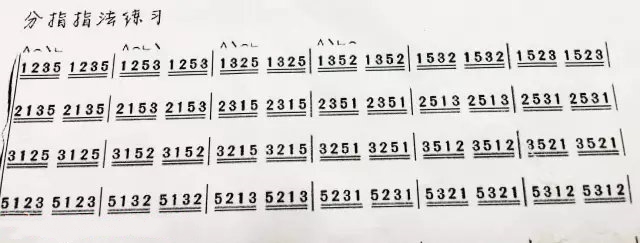Finger Splitting Practice of Guzheng
In order to play faster songs better, the player needs to be able to make full use of each finger. Here's how to train the independence of each finger.
The split-finger (finger-wrap) exercise is to arrange the fingerings used by the big, index, middle, and ring fingers of both hands in a certain order for complex playing training. ). This is an exercise in the flexibility of the fingers of both hands. In this way, the eight fingers of both hands can be flexibly and powerfully played.
Etude sheet music

practice points
The shoulders are relaxed, the forearm is raised, the wrist and the arm are kept in balance, the five fingers of both hands are naturally bent and perpendicular, and the fingertips are perpendicular to the panel of the piano without tying the pile. When you play, the fingertips actively move the strings. After playing the strings, the fingers return to the basic hand shape. Note: Do not lift your fingers up or turn your hands out after you play the strings.
training method
- The left and right hands are slowly practiced separately, and after the hands are proficient, the cooperation of the hands is practiced.
- The ring finger, middle finger, index finger, and big finger are required to have even finger strength and flexible knuckles. The strength can be increased little by little. It doesn't require a lot of strength at the beginning. After mastering the method, the strength can be increased little by little.
- The palms, arms, and wrists are required to be relaxed. Use your fingertips to exert force to play. At the beginning, you may feel that the popping sound is a little weak or you can’t exert enough force. This is normal, and it will improve after practicing for about half a month. (The premise is that method is correct).
- The timbre requires firm, full and translucent particles.
- It is required that the volume of each note should be balanced and the rhythm should be stable when changing fingers.
- Pay attention to the sensitivity and elasticity of the fingers of both hands, as well as the even force of each finger to play the string, and the angle and depth of the string should be consistent.
 渝公网安备 50010702504639号
渝公网安备 50010702504639号